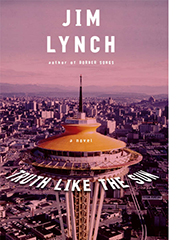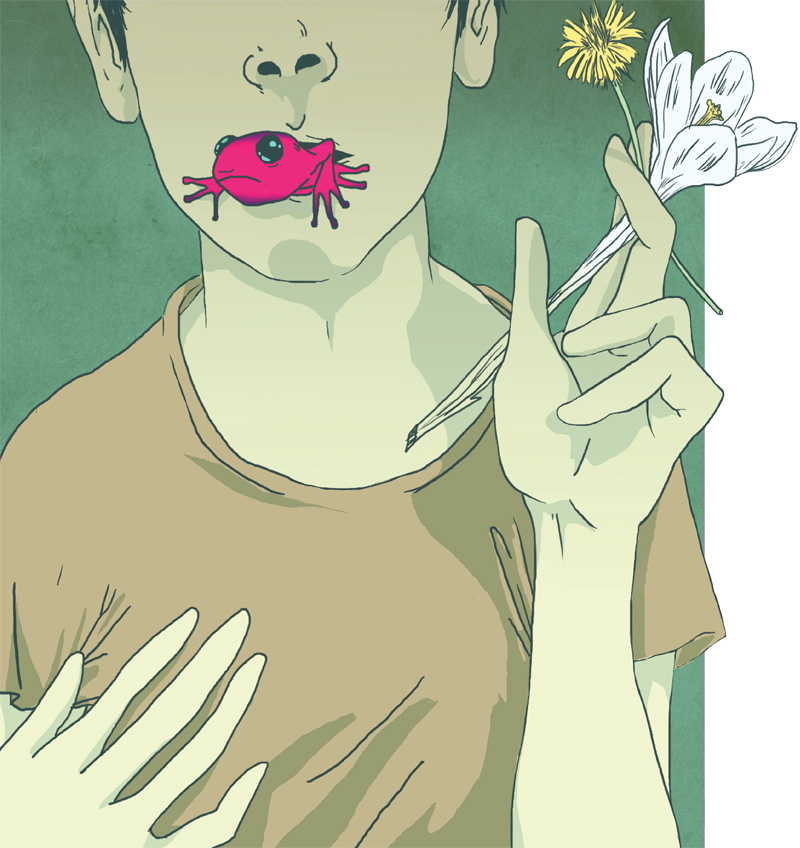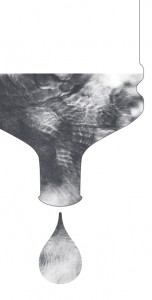Interview by Casey Bush and Tom Webb
Note: This interview is reprinted from issue #29 of The Bear Deluxe Magazine (spring 2009).
Jonathan Raymond doesn’t live alone. He has a new daughter, a “girlfriend/baby mama” and numerous creative colleagues around the country. But more so, Raymond lives in a world of common experience and imagination, where your stories are his stories, your friends are his friends, and people struggle collectively to find meaning and subsistence. Through his writings and other pursuits, Raymond Parallels historical trends with modern experiences, often wrapping them within natural, yet constructed, landscapes–be they an ad hoc dumpsite in a national forest or a parking lot in a rural community. Place is as much mental as physical for this mid-career artist out of Portland, Oregon. His recent credits include the short story collection Livability (Bloomsbury, 2008), co-writing the films Wendy and Lucy and Old Joy (both based on his stories), and the novel The Half-Life (Bloomsbury, 2004). He is an editor at Plazm and Tin House, and his art writing has appeared in Art Forum and American Painters. He received his B.A. in art history from Swarthmore College and an M.F.A. from The New School. The Bear Deluxe caught up with Raymond at a park on Northeast Portland this past spring.
TW So here we are at Irving Park; can you talk a little bit about your relationship to this park and the neighborhood?
JR I have a few nodes. I feel like I’m right in the middle of a web of different things. Down the street over there there was a house I used to spend a lot of time at. It was the Bugskull back in the early to mid-’90s. It was a very important site of just hanging out and being with other interesting people. Then I have an ex-girlfriend who lived over there, so I spent a lot of time over on Failing Street. And actually I love that that street right there is Klickatat Street, which to me has that Beverly Cleary kind of valence to it. So there is stuff in every direction.
TW So what’s on the front burner these days?
JR Well, there are a few front burners. A couple of screenplay projects are moving along. I wrote a screenplay for Kelly Reichardt, who is the director who adapted stories out of Livability. In this case I just wrote a straight screenplay for her that is also Oregon based, but it is more of period thing. It is about a lost wagon train in the earliest days of the Oregon Trail, based loosely on an actual story of a wagon train that tried to take a shortcut across the Eastern Oregon desert and ended up getting lost out near Bend and Burns. Hopefully that will shoot this fall. And then I am also helping Todd Haines, the filmmaker, adapt the novel Mildred Pierce into a miniseries. And then I have a novel I’ve been nursing along for awhile.
CB Can you describe what that’s about? You don’t have to give out trade secrets.
JR If only I knew any. It’s about a couple who moves to the general Portland area in the early ’80s to work on an organic yogurt farm and end up getting involved in corporate management training processes. They become instructors. It is about trying to find satisfying work for the main character and at the same time a romance story.
Read more »

 What makes a city a thriving environment is one of the central questions in Jim Lynch’s new novel, Truth Like the Sun. Another is “What makes a person whole?” In Lynch’s previous novels the characters are reacting to the natural forces around them; in Truth, the characters act upon the environment for their own success in the name of urban pride.
What makes a city a thriving environment is one of the central questions in Jim Lynch’s new novel, Truth Like the Sun. Another is “What makes a person whole?” In Lynch’s previous novels the characters are reacting to the natural forces around them; in Truth, the characters act upon the environment for their own success in the name of urban pride.

